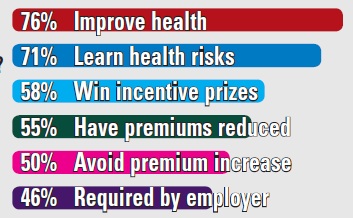Transparency is extremely important to us, so we are letting you know that we may receive a commission on some of links you click on from this page. See our disclaimer.
“Most people can get behind the idea that health, happiness, and productivity at work are related concepts, and that companies have an opportunity to foster all three—to everybody’s benefit—with a corporate wellness program,” Fortune reports.
“But while most companies do “something” to promote employee health and well-being, very few—just 7% of companies surveyed in a nationally representative 2008 study—offer what Laura Linnan, a professor of public health at the University of North Carolina Chapel Hill and head of the CDC-funded Workplace Health Research Network, calls a ‘comprehensive program.'”
Here are five best practices that define a wellness program that’s likely to produce results employees and employers both seek:
1. Programs Are Practical and Accessible: “Comprehensive wellness initiatives offer a variety of scheduled programs.”
2. The Work Environment Is Health-Conscious: “Healthy vending machine and cafeteria offerings often top the list of ways successful wellness programs create workplaces that encourage healthy behaviors on a daily basis.
3. Wellness Is Integrated into the Company’s Structure: “Company leadership needs to see it as a cohesive entity, seamless with workplace safety, benefits, human resources, and other infrastructure elements.”
4. Wellness Is Linked to Existing Support Programs: “Linkages between a company’s wellness program and other company benefits like employee assistance programs (EAPs) are key to making it easier for employees to get support when they are in a difficult emotional or physical situation that affects both their health and their work.”
5. Health Screenings and Education Are Offered: “Health screenings are a controversial aspect of the corporate wellness landscape, with some claiming that tracking cholesterol, body mass index, and other figures amounts to de facto discrimination that places a heavier financial burden on workers in less-than-ideal health.”





0 Comments